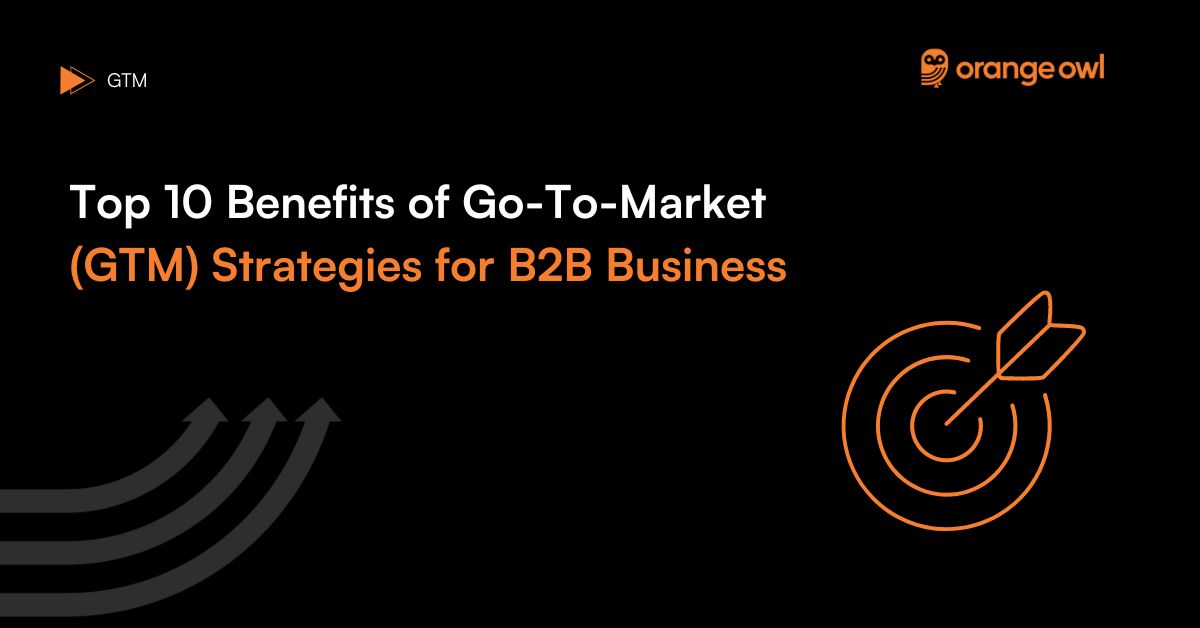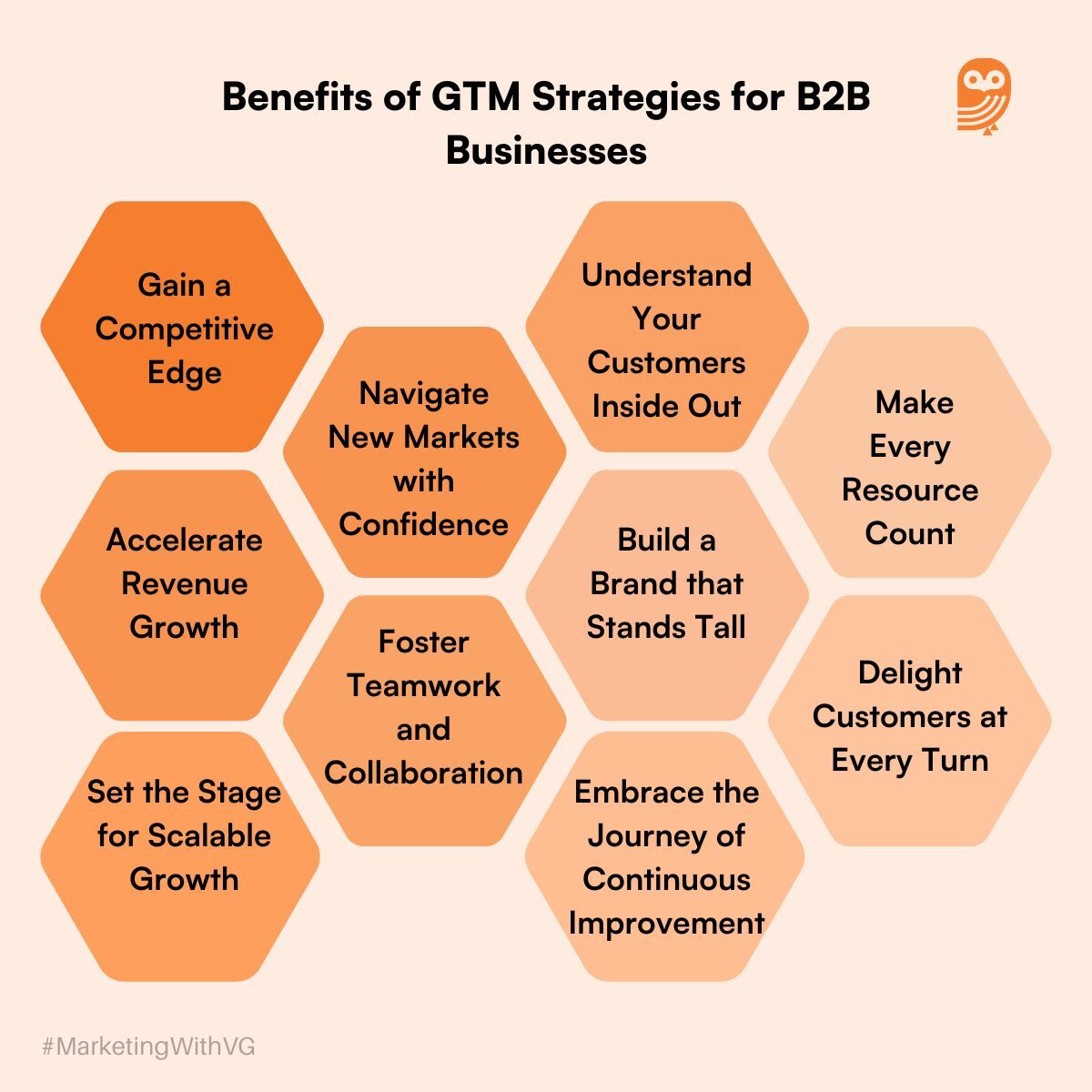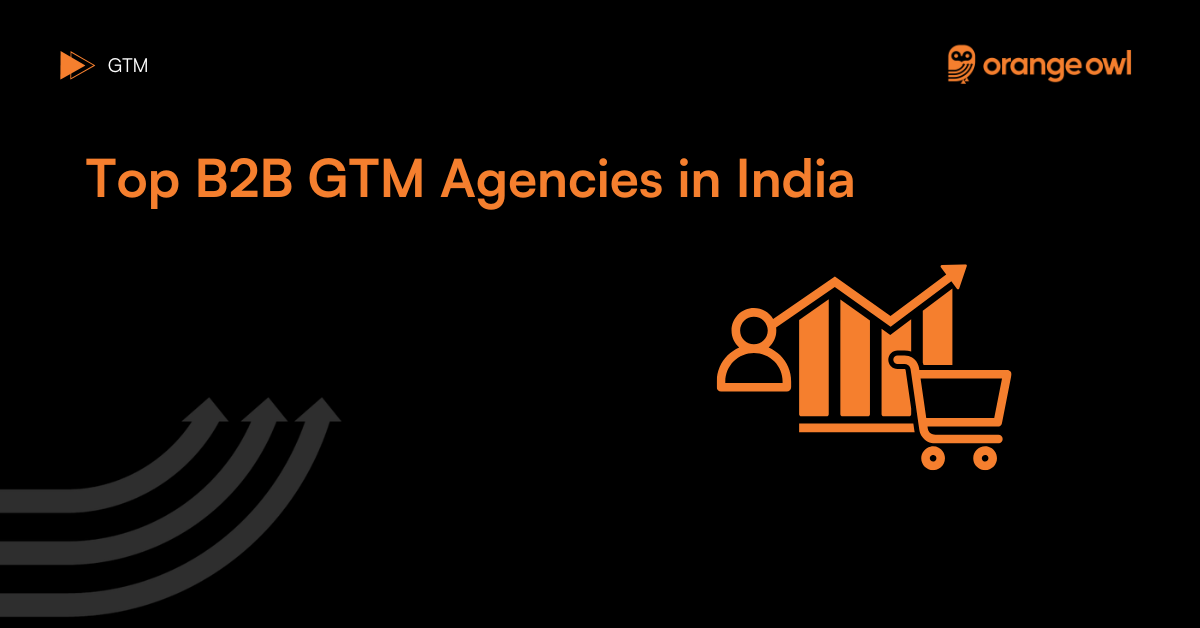The Top 10 Benefits of Go-To-Market (GTM) Strategies for B2B Businesses
Vivek Goel
February 1, 2025

Table of Contents
Ever wondered what makes some businesses soar while others struggle? It’s all about how they bring their products to market. That’s where a Go-To-Market (GTM) strategy comes in handy. In this blog, we’re breaking down the top 10 benefits of having a killer GTM strategy. From getting ahead of the competition to making your brand shine, we’ve got you covered. So, if you’re ready to take your B2B game to the next level, let’s dive in!
Key Benefits of Go-To-Market (GTM) Strategies
1. Gain a Competitive Edge
A GTM strategy helps your business differentiate itself from competitors, ensuring you stand out in the marketplace. By defining unique value propositions and addressing customer pain points, you can attract and retain customers more effectively than your rivals.
Example: When IBM launched its Watson AI platform for businesses, its GTM strategy focused on demonstrating how Watson’s advanced capabilities could help companies streamline operations, enhance decision-making, and drive innovation. By showcasing real-world use cases and success stories, IBM differentiated itself from competitors and positioned Watson as a game-changer in the enterprise AI market
2. Navigate New Markets with Confidence
With a well-defined GTM strategy, businesses can confidently enter new markets, armed with thorough research and analysis. Whether expanding regionally or venturing into entirely new territories, a GTM strategy provides the roadmap needed to navigate unfamiliar terrain and seize opportunities.
Expert Tip: Conduct thorough market research before expanding into new territories. Understanding local regulations, cultural nuances, and consumer behaviors can help mitigate risks and maximize opportunities.
When Salesforce expanded its cloud CRM platform into new industries, such as healthcare and finance, it conducted thorough market research and customized its GTM strategy to address the unique needs and regulatory requirements of each sector.
3. Understand Your Customers Inside Out
A GTM strategy enables businesses to gain deep insights into customer behavior, preferences, and needs, allowing for tailored marketing efforts. By understanding your target audience on a thorough level, you can create messaging and solutions that resonate with their specific challenges and aspirations.
Best Practice: Create detailed buyer personas based on demographic and psychographic data. This allows for more targeted marketing efforts and personalized messaging that resonates with your audience.
4. Make Every Resource Count
Efficient resource allocation is key to success. A GTM strategy ensures that time, money, and manpower are utilized effectively to maximize ROI. By prioritizing activities and channels with the highest potential impact, businesses can optimize their investments and achieve greater results with fewer resources.
Example: Slack, a popular team collaboration platform, optimized its marketing budget by reallocating funds from traditional advertising to content marketing and digital channels. By focusing on creating valuable content and engaging with its target audience through social media and online communities, Slack was able to achieve significant growth without increasing its overall marketing spend.
5. Accelerate Revenue Growth
By fueling growth initiatives, a GTM strategy accelerates sales cycles, attracting new customers and boosting revenue. With a clear plan in place for product launches, marketing campaigns, and sales strategies, businesses can capitalize on market opportunities and drive sustainable revenue growth over time. Businesses with effective Sales and Marketing alignment are set to achieve 208% higher marketing revenue than organizations with disjointed teams.
Expert Tip: Focus on creating a seamless customer journey from awareness to purchase. This involves aligning marketing, sales, and customer service efforts to ensure a smooth transition at every touchpoint.
Salesforce, implements a unified sales and marketing strategy to accelerate revenue growth. By aligning sales and marketing efforts around shared goals and objectives, Salesforce can streamline the customer journey and drive conversions more effectively, leading to increased revenue and market share.

6. Foster Teamwork and Collaboration
A GTM strategy promotes collaboration across departments, aligning efforts towards common goals and driving success. By involving stakeholders from sales, marketing, product development, and beyond, businesses can leverage diverse perspectives and expertise to execute their GTM strategy with precision and agility.
Best Practice: Hold regular cross-functional meetings to ensure alignment and communication between departments. Encourage transparency and shared goals to drive collective success.
7. Build a Brand that Stands Tall
Shaping brand identity and messaging is crucial. A GTM strategy helps businesses carve out a niche and build a strong brand presence. By articulating your brand’s unique value proposition and positioning, you can differentiate yourself from competitors and leave a lasting impression on customers.
Example: SAP, a global leader in enterprise application software, partners with industry influencers and thought leaders to establish credibility and authority in the B2B software market. By hosting executive roundtables, publishing white papers, and sponsoring industry events, SAP positions itself as a trusted advisor and strategic partner for businesses seeking digital transformation solutions.
8. Delight Customers at Every Turn
Customer satisfaction is paramount. A GTM strategy ensures delightful customer experiences, fostering loyalty and trust. By delivering exceptional value and support throughout the customer journey, businesses can cultivate long-term relationships that drive repeat purchases and positive word-of-mouth referrals.
Expert Tip: Implement a customer feedback loop to gather insights and identify areas for improvement. Actively listening to customer needs and addressing pain points can turn satisfied customers into brand advocates.
9. Set the Stage for Scalable Growth
Scalability is essential for long-term success. A GTM strategy lays the groundwork for expansion into new markets and product launches. By anticipating future growth opportunities and planning accordingly, businesses can scale their operations efficiently and capitalize on emerging trends and market shifts.
Best Practice: Invest in scalable technology and infrastructure that can support future growth. This includes robust CRM systems, automation tools, and flexible manufacturing processes.
At Amazon Web Services (AWS), a subsidiary of Amazon specializing in cloud computing services, scalable infrastructure, and flexible pricing options enable B2B customers to scale their operations rapidly and cost-effectively. By offering pay-as-you-go pricing and on-demand resources, AWS empowers businesses of all sizes to innovate and grow without incurring upfront capital expenses.
10. Embrace the Journey of Continuous Improvement
Continuous improvement is key to staying ahead. A GTM strategy enables businesses to adapt and refine their approach based on real-world feedback and emerging trends. By maintaining flexibility and agility in execution, businesses can iterate on their GTM strategy and drive continuous growth and innovation.
Example: Google Cloud Platform (GCP) incorporates customer feedback and market insights into its product development process to drive continuous improvement and innovation. By listening to customer needs and adapting its offerings accordingly, GCP can stay ahead of the competition and deliver value-added solutions that address real-world business challenges.
Conclusion:
In conclusion, a detailed Go-To-Market (GTM) strategy is your secret weapon for B2B success. By gaining a competitive edge, understanding your customers inside out, and making every resource count, you’ll be prepared for growth like never before. With streamlined operations, delighted customers, and a brand that stands tall, you’ll be ready to conquer new markets and scale your business to new heights. So, whether you’re a seasoned CEO or a marketing enthusiast, it’s time to harness the power of a comprehensive GTM strategy and unlock the full potential of your business.
Frequently Asked Questions (FAQs) about Top 10 Benefits of Go To Market Strategies for B2B Businesses :
A GTM strategy is a comprehensive plan detailing how a company will launch and market its product or service to reach target customers and achieve competitive advantage. It is crucial for B2B businesses as it helps in defining the target market, positioning the product, and creating an actionable plan to drive growth and profitability.
A GTM strategy helps a business identify and leverage its unique value propositions, effectively communicate with target customers, and address their pain points. This differentiation helps the business stand out in the marketplace, attract and retain customers, and outperform competitors.
Market research is fundamental in a GTM strategy as it provides insights into customer needs, market trends, competitive landscape, and potential barriers to entry. This information guides the development of tailored marketing and sales strategies, ensuring a successful market entry.
A GTM strategy prioritizes activities and channels with the highest potential impact, ensuring optimal use of time, money, and manpower. By focusing on high-value initiatives, businesses can maximize their return on investment and achieve better results with fewer resources.
By streamlining the sales cycle, aligning marketing and sales efforts, and targeting high-potential customers, a GTM strategy accelerates revenue growth. It provides a clear plan for product launches and marketing campaigns, enabling businesses to capitalize on market opportunities quickly.
A GTM strategy involves cross-functional collaboration, ensuring alignment between sales, marketing, product development, and customer service teams. This unified approach fosters teamwork, leverages diverse expertise, and drives collective success toward common business goals.
A GTM strategy helps in shaping a strong brand identity by articulating the unique value proposition and positioning in the market. This clear and compelling brand messaging differentiates the business from competitors and establishes a memorable brand presence.
Customer satisfaction drives loyalty, repeat business, and positive word-of-mouth referrals. A GTM strategy ensures that businesses deliver exceptional value and support throughout the customer journey, fostering long-term relationships and enhancing customer experiences.
A GTM strategy lays the foundation for scalability by anticipating future growth opportunities and planning accordingly. It includes investing in scalable technology and infrastructure, enabling the business to efficiently expand into new markets and launch additional products or services.
Continuous improvement is crucial for adapting to market changes and staying ahead of competitors. A GTM strategy emphasizes flexibility and agility, allowing businesses to iterate on their approach based on real-world feedback and emerging trends, driving sustained growth and innovation.


